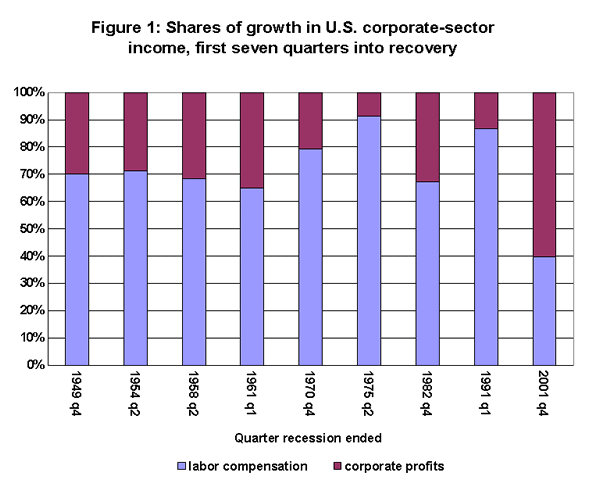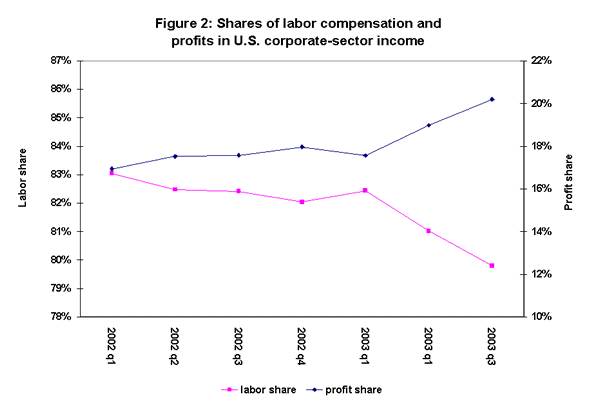Snapshot for December 3, 2003.
This Snapshot was updated on January 30, 2004 to include revised data. The original Snapshot was published on December 3, 2003.
Fast growth for profits, slow growth for wages and benefits
The recent news about fast rates of economic growth is undoubtedly puzzling to those millions of Americans still struggling to make ends meet. There is a simple explanation for the disconnect between what aggregate gross domestic product (GDP) numbers are telling us and what many working families feel: this is the most profit-biased recovery since World War II. While corporate profits have soared, growth in labor compensation (the paychecks that families live on) has been historically sluggish.
In the first seven quarters of the current recovery, a historically low share of income growth in the U.S. corporate sector is accounted for by rising labor compensation, while a historically high share is accounted for by corporate profits. Figure 1 below shows the share of growth in U.S. corporate-sector income accounted for by labor compensation and profits at an identical point in every economic recovery since World War II that has lasted seven quarters.

Labor compensation’s share of total income growth averaged 75% in previous recoveries and has never been lower than 65% until the most recent one, in which labor compensation has accounted for only 40% of total income growth. Conversely, profits’ share of total income growth averaged 25% in all previous recoveries, and have never been higher than 35% until the most recent recovery, in which profits accounted for 60% of income growth.1
Figure 2 shows that the divergence between profits and labor compensation has increased in the late stages of the current recovery. Based on historical averages of profit and labor compensation growth in recoveries, one would expect the labor share to be 2% higher and the profit share 2% lower than those that currently prevail. Instead, corporate profits continue to rise as a share of income growth, while labor compensation continues to decline.

Those who work for a living have reaped historically low gains from the current economic recovery, while owners of corporations have enjoyed historically high gains. Faster economic growth must be more evenly distributed before rising GDP numbers translate into rising living standards for the majority of U.S households.
1. Focusing on the non-financial corporate sector sidesteps many measurement problems that arise in using the wider GDP figures. In 2003, this sector accounted for more than 60% of total GDP.
Source: Bureau of Economic Analysis, National Income and Product Accounts (NIPA), Table 1.14.
This week’s Snapshot was written by EPI economist Josh Bivens.
